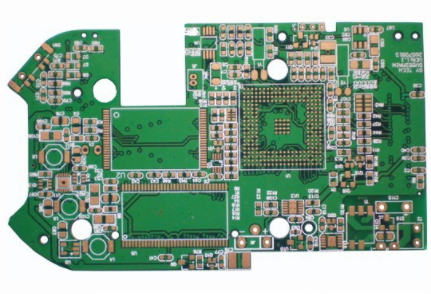SMT soldering is an indispensable and important link in the patch processing process. If there is a batch leakage in this link, it will directly affect the unqualified or even scrapped circuit board of the patch processing. Therefore, in the process of patch processing, special attention should be paid to proper soldering habits to avoid improper soldering that affects the quality of patch processing. Here are some common bad soldering habits in SMT processing, reminding everyone to pay attention.
1. Randomly choose the soldering iron tip without considering the appropriate size. In the process of patch processing, the selection of the size of the soldering iron tip is very important. If the size of the soldering iron tip is too small, the residence time of the soldering iron tip will be prolonged, and the solder will not flow sufficiently and lead to cold solder joints.
2. Improper use of flux. It is understood that many workers are accustomed to using too much flux in the process of patch processing. In fact, this not only can not help you have a good solder joint, but it will also cause the reliability of the lower solder joint, which is prone to corrosion., Electronic transfer and other issues.
3. The process of PCB welding heating bridge is not appropriate. The soldering thermal bridge in SMD processing prevents the solder from forming a bridge.

If this process is not operated properly, it will result in cold solder joints or insufficient solder flow. Therefore, the correct soldering habit should be to place the soldering iron tip between the pad and the pin, and the tin wire is close to the soldering iron tip. When the tin melts, move the tin wire to the opposite side, or place the solder wire between the pad and the pin., The soldering iron is placed on the tin wire, and the tin wire is moved to the opposite side when the tin is melted; in this way, a good solder joint can be produced and the chip processing will not be affected.
4. Excessive force is applied to the lead soldering during SMD processing. Many SMT workers believe that too much force can promote the heat conduction of the solder paste and promote the soldering effect, so they are used to pressing down forcefully during soldering. In fact, this is a bad habit, which can easily lead to problems such as warping, delamination, depression, and white spots on the PCB. Therefore, it is completely unnecessary to use excessive force during the soldering process. In order to ensure the quality of the patch processing, only the soldering iron tip needs to be gently touched to the pad.
5. Improper transfer welding operation. Transfer soldering refers to adding solder to the tip of the soldering iron first, and then transfer to the connection. Inappropriate transfer soldering will damage the tip of the soldering iron and cause poor wetting. Therefore, the normal transfer soldering method should be that the soldering iron tip is placed between the pad and the pin, the soldering wire is close to the soldering iron tip, and the soldering wire is moved to the opposite side when the tin is melted. Place the tin wire between the pad and the pin. Place the soldering iron on the tin wire and move the tin wire to the opposite side when the tin melts.
6. Unnecessary modification or rework. The biggest taboo in the soldering process of patch processing is to modify or rework in pursuit of perfection. This approach not only cannot make the quality of the patch more perfect, but on the contrary, it is easy to cause the metal layer of the patch to be broken, the PCB board is delaminated, and unnecessary time is wasted or even scrapped. So don't make unnecessary modification and rework on the patch.